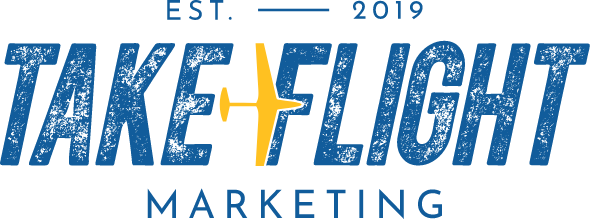Google Ads Optimization Tactics for High-Spend Brands
Google advertising has evolved. What used to be a straightforward keyword bidding game is now a sophisticated ecosystem that blends machine learning, audience targeting, and creative testing. For high-spend brands, this shift creates both challenges and opportunities.
Rising CPCs, increased competition, and more complex attribution models mean that scaling profitably requires a disciplined approach. But when managed correctly, Google Ads remains one of the most powerful growth levers for direct-to-consumer and enterprise brands alike.
Here are three core strategies that high-spend advertisers should prioritize in 2025.
Strategy 1: Master Audience Targeting Beyond Keywords
Old-school Google Ads was simple: pick a keyword, bid on it, pray it converts. That worked when CPCs were cheap and competition was light. Not anymore.
Now, Google is an audience machine as much as a search engine. If you are not pairing keywords with smart audience targeting, you are leaving serious money on the table.
Here is how you fix it:
Layer intent with behavior. Do not just bid on “coffee maker.” Pair it with an in-market audience actively shopping for kitchen upgrades.
Upload Customer Match lists. Your CRM is gold. Retarget high-value customers across Search, YouTube, and Display.
Use predictive audiences. Google literally tells you who is “likely to purchase in 7 days.” That is as close to mind-reading as it gets.
Keywords open the door. Audiences decide who actually walks in.
Strategy 2: Creative That Actually Deserves a Click
CPCs are rising. Which means you cannot always win by bidding more. You win by writing copy and building ads that outperform everyone else in the auction.
Think of your ad creative as the outfit your brand wears to the party. Show up in sweatpants and you blend into the background. Show up in something sharp, on-trend, and a little irresistible? People notice.
Here is what works in 2025:
Responsive Search Ads (RSAs): Load in multiple headlines and descriptions. Let Google’s AI serve the winning combos.
Dynamic Search Ads (DSAs): If you have a big product catalog, let Google crawl your site and generate tailored copy.
Ad extensions: Sitelinks, callouts, snippets. These are your accessories — small, but they make the whole look stronger.
Copywriting that sells: Lead with benefits, not features. Add urgency sparingly but effectively. And always test a “reason why” headline, like “Trusted by 50,000 families.”
Punchy version:
Write headlines that are clear and strong within 30 characters
Use every relevant extension available for added impact
Borrow words directly from your reviews to add credibility
When CPCs climb, strong creative is the most effective way to protect your ROI.
Strategy 3: Attribution That Doesn’t Lie to You
At scale, you cannot afford attribution models that blur reality. High-spend brands live and die by measurement, and accurate attribution is the only way to scale profitably.
What to use in 2025:
Data-driven attribution (DDA). Gives credit to multiple touchpoints, not just the final click.
Enhanced Conversions. Uses privacy-safe hashed data to improve match rates and accuracy.
Offline conversion tracking (OCT). Upload CRM or sales data back into Google Ads so campaigns optimize for actual revenue, not empty leads.
Experimentation frameworks. Run structured A/B tests on bidding strategies, creative, and targeting.
Pro tip: Track MER (Marketing Efficiency Ratio) alongside ROAS. It is the CFO-friendly number that proves your ads are driving real growth, not just clicks.
You cannot scale what you cannot measure. Get attribution right or everything else falls apart.
Ready to optimize your own campaigns? Here is how you start winning today
Audit your targeting.
Look at your campaigns and ask: am I only running keywords, or am I layering in-market and predictive audiences? For high-spend accounts, keyword-only targeting is a money pit. Fix that first. Targeting without audiences is like fishing without bait.Upgrade your creative.
Test multiple Responsive Search Ads (RSAs) and Dynamic Search Ads (DSAs) until you know what headlines, benefits, and calls to action actually get clicks. Use customer reviews to find the language your audience already responds to. Strong creative is the cheapest way to beat rising CPCsImplement Enhanced Conversions and Offline Conversion Tracking (OCT).
Stop tracking clicks like they are revenue. Feed real purchase or CRM data back into Google Ads so it learns who your best customers are, not just who filled out a form. If you cannot connect ad spend to sales, you are guessing.Build an experimentation calendar.
Set a regular cadence to test bidding strategies, copy, and audiences. Do not wait until Q4 panic season to optimize. Treat testing as a weekly or monthly ritual so you are always one step ahead. Testing should be proactive, not a fire drill.Report smarter.
Vanity metrics like CTR and impressions look pretty on a dashboard, but they do not prove growth. Start reporting on MER (Marketing Efficiency Ratio), LTV (Lifetime Value), and CAC (Customer Acquisition Cost). These are the numbers your CFO cares about. The right metrics unlock bigger budgets.
Scaling Google Ads in 2025 is less about budget size and more about execution. Keywords remain foundational, but audiences, creative, and attribution are now equally critical.
Brands that treat optimization as a continuous process will see stronger ROI, greater efficiency, and more predictable growth. Those that rely on outdated tactics risk rising costs without results.
The time to modernize your Google advertising strategy is now.
FAQ’s about Google Advertising
1. What is Google advertising?
Google advertising is paid promotion across Google Search, Display, YouTube, and Shopping designed to drive measurable outcomes such as clicks, leads, and sales.
2. How do high-spend brands optimize Google Ads?
By layering audience data with keywords, using advanced creative formats like RSAs, and implementing Enhanced Conversions and Offline Conversion Tracking.
3. What metrics should be tracked in Google advertising?
MER, LTV, CAC, and ROAS are key to understanding efficiency and long-term growth.
4. Why is attribution important in Google advertising?
Attribution ensures ad spend is tied to real revenue and accounts for all touchpoints in the customer journey.
